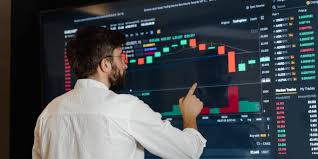Essential Crypto Trading Technical Tools You Need to Know

Essential Crypto Trading Technical Tools You Need to Know
In the fast-paced world of cryptocurrency trading, having the right tools can make the difference between success and failure. Technical tools are essential for analyzing price trends, market sentiment, and trading volumes. In this article, we will explore the most essential crypto trading technical tools that traders should incorporate into their strategies to improve their decision-making processes and enhance their overall trading experience. For more insights and resources, visit Crypto Trading Technical Tools https://www.carlagericke.com/category/blog/page/22/.
1. Charting Tools
Charting tools allow traders to visualize market data and better understand price movements. Most trading platforms offer built-in charting tools, but many traders also rely on external solutions such as TradingView or Coinigy. These platforms provide a variety of chart types (candlestick, line, area, etc.), numerous technical indicators (moving averages, RSI, MACD), and drawing tools (trend lines, Fibonacci retracements) that help traders identify patterns and trends in the market.
2. Technical Indicators
Technical indicators are quantitative tools that traders use to predict future price movements based on historical data. Some of the most popular indicators include:
- Moving Averages: These indicators smooth out price data to identify trends over specific periods. Simple Moving Averages (SMA) and Exponential Moving Averages (EMA) are widely used.
- Relative Strength Index (RSI): This momentum oscillator measures the speed and change of price movements. It ranges from 0 to 100 and is used to identify overbought or oversold conditions.
- Moving Average Convergence Divergence (MACD): A trend-following momentum indicator that shows the relationship between two moving averages of a security’s price. MACD is useful for spotting potential buy or sell signals.
3. Trading Bots
With the cryptocurrency market operating 24/7, many traders turn to automated trading bots to handle their trading strategies. These bots can execute trades on behalf of the user based on predefined criteria. Bots can analyze market conditions, perform technical analysis, and execute trades much faster than a human trader could manually. Popular trading bots include 3Commas, Cryptohopper, and HaasOnline. It’s imperative that traders thoroughly backtest any bot to understand its performance over various market conditions.
4. Signal Services
Signal services provide traders with insights and alerts regarding potential trading opportunities. These services often rely on technical analysis, market sentiment, or both to generate signals. Some notable examples of signal services include CoinSignals, CryptoAlarm, and MyCryptoParadise. They can be especially valuable for new traders or those who may lack the time or expertise to analyze the markets themselves. However, traders should exercise caution and conduct their due diligence before relying on external signals.

5. Crypto Portfolio Trackers
Managing a diversified portfolio is crucial for risk management in crypto trading. Portfolio trackers help traders monitor their investments in real-time, providing an overview of their portfolio's performance. Tools like CoinMarketCap, Blockfolio, and Delta allow users to input their holdings and analyze performance over time, track gains and losses, and stay updated on market prices. These trackers can also set price alerts, making it easier to make informed trading decisions.
6. Risk Management Tools
Effective risk management is vital in trading, especially in the highly volatile world of cryptocurrencies. Tools that help assess risk levels and manage exposure can save traders from significant losses. Open-source software such as KryptoTracker and applications like CryptoPro are designed to help traders calculate risk metrics and make financially sound decisions. Additionally, platforms often have built-in stop-loss and take-profit features to help automate risk management.
7. News Aggregators
The cryptocurrency market is heavily influenced by news events and announcements. News aggregators that compile relevant news from multiple sources can help traders stay informed about market developments. Platforms like CoinDesk, CoinTelegraph, and CryptoPanic provide updates on market news, regulatory changes, and technological advancements. Keeping abreast of the latest news can be critical for making informed trading decisions.
8. Backtesting Tools
Backtesting tools allow traders to test their strategies against historical data to assess their effectiveness. These tools can help identify the profitability and risks associated with different trading approaches. Trading platforms such as TradingView offer built-in backtesting features, while standalone software like Amibroker provides advanced backtesting capabilities for serious quant traders. Understanding how a strategy would have performed in the past can provide insights into potential future success.
Conclusion
Utilizing the right crypto trading technical tools is essential for traders looking to maximize their potential in this unpredictable market. By selecting the appropriate charting tools, technical indicators, trading bots, signal services, portfolio trackers, risk management tools, news aggregators, and backtesting tools, traders can improve their decision-making processes and enhance their trading strategies. As always, education and continuous learning remain paramount in the world of cryptocurrency trading, and incorporating these tools can help traders achieve greater success.
